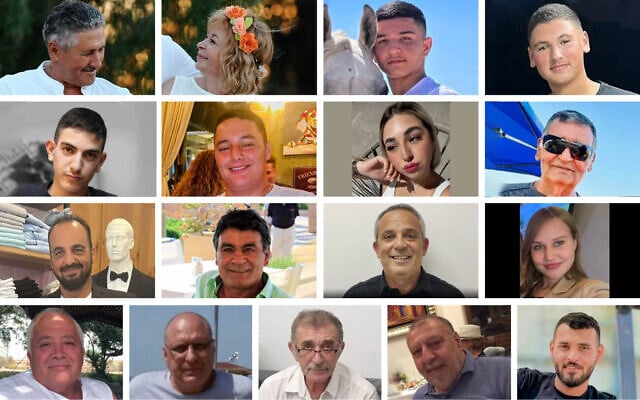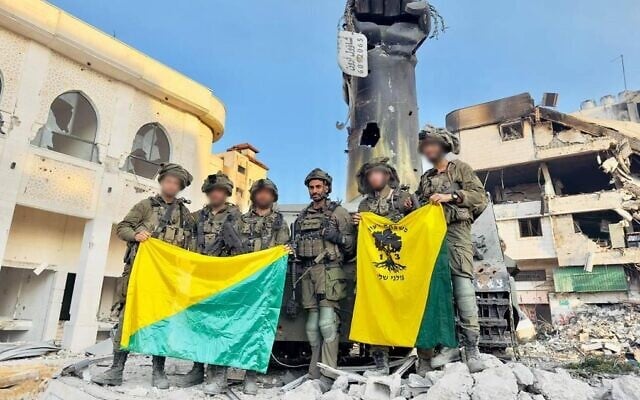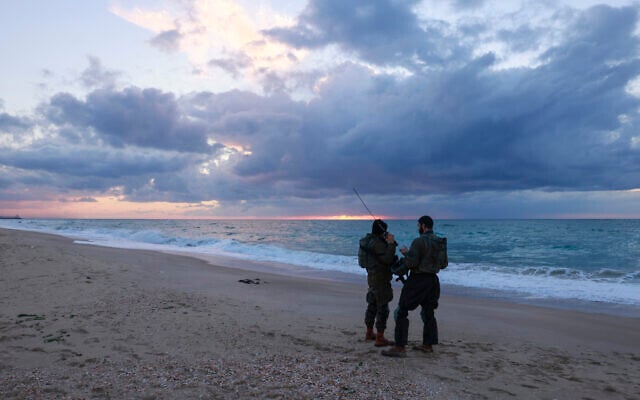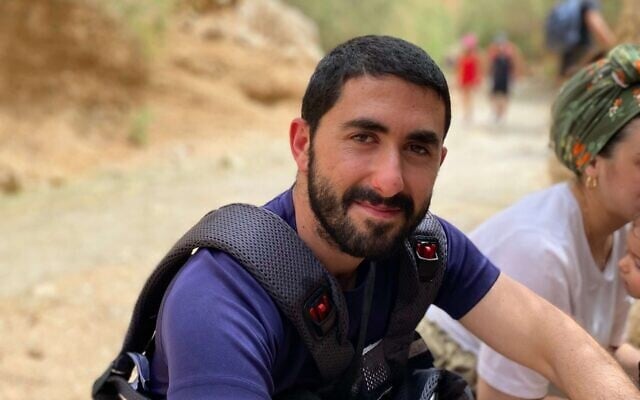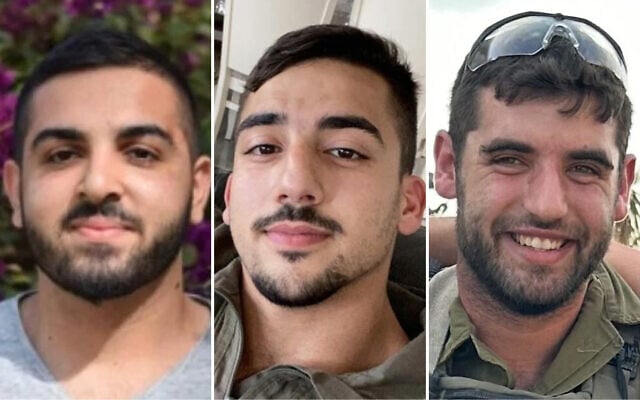


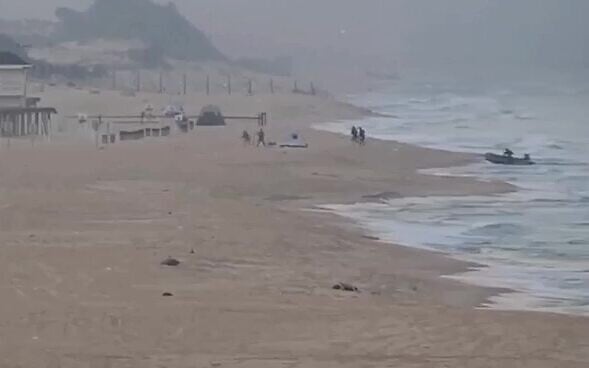
A squad of Israeli soldiers stationed near the border with the Gaza Strip abandoned civilians sheltering on Zikim Beach as Hamas terrorists invaded the coast during the terror group’s onslaught on October 7, 2023, an Israel Defense Forces probe published on Monday showed.
The troops of the Golani Brigade’s 51st Battalion withdrew from the beach while failing to properly engage terrorists who arrived on speedboats, with the attackers going on to murder 17 civilians in the area. The terrorists then advanced on Kibbutz Zikim, whose civil defense squad successfully fought back, preventing an infiltration of the community.
The IDF probe into the attack on Zikim Beach also found that the bodies of seven murdered civilians were left inside a seaside bomb shelter for a week before being recovered by rescue services.
The findings published Monday are the latest in a series of detailed investigations into some 40 battles and massacres that took place during Hamas’s October 7 attack, when about 5,600 terrorists stormed across the border, killed some 1,200 people, and took 251 hostages into Gaza, where dozens remain captive.
Similar to other investigations, the probe concluded that the IDF “failed in its mission to protect” civilians at Zikim Beach, mainly because the military had never prepared for such an event — a widespread attack on dozens of towns and army posts — alongside difficulty in putting together an accurate picture of ongoing situation due to the collapse of the Gaza Division’s command and control.
“The failure is expressed in the fact that the terrorists were able to infiltrate our territory in a short time and murder 17 civilians,” the probe stated.
The probe, carried out by Col. Tal Kuritsky — the commander of the 5th Reserve Infantry Brigade — covered all aspects of the attack on beach and the nearby kibbutz.
The IDF said investigators made visits to the scene and reviewed every possible source of information, including footage taken by terrorists with body-mounted cameras, footage taken by civilians, surveillance camera videos, army radio communications, and interviews with survivors.
The Zikim Beach probe was aimed at drawing specific operational conclusions for the military. It did not examine the wider picture of the military’s perception of Gaza and Hamas in recent years, which has been covered in separate, larger investigations into the IDF’s intelligence and defenses.
The probe stated that Golani soldiers who did not protect civilians acted wrongly both “professionally and ethically.” The troops should have rushed toward the terrorists upon seeing them, instead of trying to reposition themselves, the investigation said, describing their actions as a “massive failure.”
“The soldiers did not risk their lives and did not strive to engage in close combat with the enemy,” the probe said.
Some of those soldiers later fought in the IDF’s ground offensive in the Gaza Strip, though all but one — who now serves in a noncombat role — have since been released from service.
The probe also found that there was no proper communication between the Gaza Division and the Israeli Navy for some 40 hours, from the start of the onslaught till around 10 p.m. on October 8, as many of the communication networks were disrupted by Hamas’s attack.
The investigation was split into three separate events: the battle at sea conducted by the Israeli Navy, the massacre at Zikim Beach, and the defense of Kibbutz Zikim.
Amid an initial barrage of over 1,000 rockets launched by Hamas at Israel at 6:29 a.m., 38 terrorists in seven speedboats set out from the Gaza Strip for Israel. According to a Navy investigation, each boat was traveling at around 30 knots (55 kph), about 500 meters from the coast, with a distance of 600-700 meters between each one.
The boats were heading for two IDF bases near the border, as well as to Zikim Beach — with the aim of reaching the nearby kibbutz — and to the Trans-Israel oil pipeline terminal near Ashkelon.
At 6:36 a.m., the first of the seven speedboats crossed Israel’s maritime border with Gaza. Within three minutes, it was destroyed by a Dvora-class patrol boat of the Navy’s 916th Patrol Squadron armed with a 25mm Typhoon cannon. Four terrorists aboard were killed.
The second speedboat, after seeing the first being destroyed, made a U-turn and instead of continuing to the oil terminal, reached the coast near the border, close to a shooting range that belongs to Zikim Training Base. Three terrorists disembarked at 6:40 a.m. and joined up with several others who had infiltrated through the border barrier, attacking Zikim Base.
The third speedboat managed to arrive near the oil terminal before being destroyed at 6:43 a.m. by the same Navy patrol boat. Sailors of the Snapir harbor security unit on a small Defender-class boat opened fire and used depth charges against the surviving terrorists. All seven terrorists aboard the boat were killed.
The fourth speedboat arrived at Zikim Beach at 6:45 a.m., and five terrorists got off.
Around that same time, the fifth speedboat was shot by the Navy patrol boat in the sea, partially damaging it. Three of the terrorists were killed, while three others survived and managed to reach the Israeli coast, heading toward the pipeline facility. (Later in the morning, at around 9:30 a.m., two of the terrorists were killed by Navy shelling.)
The sixth speedboat, with seven terrorists aboard it, also landed on Zikim Beach at 6:48 a.m. Another Dvora-class patrol boat, which had been defending an offshore gas rig, shelled the terrorists on the beach, killing two of them.
The seventh and last speedboat, with six terrorists on board, docked near an IDF logistics base close to Zikim Training Base at 6:52 a.m. One of the patrol boats opened fire on it, killing four of the Hamas attackers. The surviving two terrorists breached the logistics base and were killed by Golani soldiers stationed there.
As Hamas’s rocket fire began at 6:29 a.m., a squad of six Golani soldiers in a GMC Savana van positioned outside Zikim Base headed into the IDF logistics base. At 6:42 a.m., the troops, joined by another soldier, Sgt. Dvir Lisha, 21, headed for the beach after receiving reports of a seaborne infiltration.
At 6:43 a.m., 32 civilians were sheltering at the beach, including eight in the bathroom, 12 in the bomb shelter, two under the beach’s sunshades, five in the sand dunes to the north of the beach, four in the sand dunes to the south, and one in the parking lot.
The seven Golani soldiers reached the bathroom at 6:44 a.m., where they met the civilians and told them to stay put. The troops then advanced toward the sea, as the fourth Hamas speedboat, with five terrorists on board, arrived a minute later.
Only once the terrorists began to open fire did the soldiers spot them. According to surveillance footage, the troops withdrew to the bathroom area at 6:46 a.m. There was a distance of about 110 meters between the soldiers and the terrorists, and limited visibility. Lisha attempted to return fire while using the bathroom building as cover, but was unable to hit any of the terrorists.
Meanwhile, the terrorists advanced on the sunshades area, murdering two fishermen, John Aslanov, 70, and Robert Shaulov, 70.
The soldiers, at this point, had lost eye contact with the terrorists and decided at 6:47 a.m. to withdraw further back toward the parking lot, while leaving behind the eight civilians in the bathroom and 12 others in the bomb shelter. The troops reached an elevated position on the edge of the parking lot, thinking they could see the terrorists from there, but structures were blocking their view.
The terrorists pushed forward toward the parking lot and opened fire on the soldiers after spotting them. The terrorists also murdered Abed Ziyadne, 26, at the parking lot.
Two of the soldiers, including Lisha, remained in the elevated position, while the other five withdrew toward the southern sand dunes, where civilians were sheltering. However, the troops did not stop where the civilians were, but rather moved even further away, for unclear reasons.
The five surviving terrorists of the sixth speedboat joined up with the five terrorists already at the beach and opened fire on the soldiers hiding in the dunes, wounding one of them. Another was shell-shocked. The Navy shelling against the terrorists also hit close to where the civilians and soldiers were hiding, though none were wounded by it, the probe found.
The terrorists then murdered seven civilians in the bathroom: Yuri and Svetlana Lisovoy, 63 and 61, Shahaf Krief, 17, Tal Keren, 17, Or Taasa, 17, Nadav Tayeb, 17, and Alina Vaisberg, 17. In the bomb shelter, the terrorists murdered another seven civilians: Eli and Arye Uzan, 68 and 42, Benny Genish, 70, Avi Hasday, 53, Yulia Chaban, 24, Danil Kimenfeld, 64, and Vladimir Zhukov, 63.
Lisha, at 6:51 a.m., told the soldier next to him at the elevated position that he was going to join the commander of the squad. But instead of heading for the dunes, the soldier, for unclear reasons, ran straight toward the bathroom, where the terrorists were located. He was immediately killed, and the terrorists took his gun.
At 6:54 a.m., six of the terrorists at the beach advanced on foot along the Nahal Shikma stream, toward Kibbutz Zikim. The other four, at 6:57 a.m., took control of the Golani soldiers’ van and headed out of the parking lot, also toward Zikim.
At 6:40 a.m., the Ashdod Naval Base notified the chief of Kibbutz Zikim’s civil defense squad that a seaborne infiltration was underway. The security chief alerted the team, who were all armed with assault rifles. The team began to take up their posts at 6:42 a.m.
One member of the security team stationed at a post on the edge of the kibbutz identified the stolen IDF van approaching on the road at 7:04 a.m., though he initially thought it was Israeli forces. As four terrorists got out, he understood they were not Israeli soldiers and opened fire.
The other terrorists from Zikim Beach arrived in the area on foot. Meanwhile, the chief of the local security team and two other officers reached the post and exchanged fire with the terrorists.
At around 7:20 a.m., the company commander of the Golani troops, who had been away for the weekend, arrived in the area from the north and joined the local security team. At this point, two of the terrorists were killed in an exchange of fire.
At around 8 a.m., the terrorists hurled eight grenades at the post, wounding two members of the security team. Others took up the post and continued the exchange of fire with the terrorists.
At 8:20 a.m., Shin Bet officer Michael Ben Moshe, 26, arrived on the road outside Zikim while trying to reach a nearby IDF base. He got out of his car and exchanged fire with the terrorists before being killed. Some of the terrorists took his car, and drove it back to the Zikim Base area.
At the same time, civilians fleeing from a party at an undesignated beach, who had initially hid at Zikim Base, passed by the area and came under fire by the terrorists. Three were lightly wounded.
At 8:45 a.m., troops of the Maglan commando unit reached Zikim after being alerted by their company commander, a resident of the kibbutz. The commandos picked up their officer and drove to the location of the exchange of fire, then advanced on the terrorists, killing two.
At this point, the remaining terrorists withdrew and abandoned their plan to capture Kibbutz Zikim.
At 12:30 p.m., troops of the 202nd Paratroopers Brigade scanned the beach for possible terrorists, but found none. The soldiers found some of the bodies and removed them, but were dispatched to Kfar Aza before they could continue.
At 11 p.m., other paratroopers were dispatched to protect Zikim, as the military believed there were still terrorists in the area.
On October 8, two terrorists were killed by Navy shelling and ground troops near Zikim Beach.
On October 10, one terrorist — from the fifth speedboat — was killed near the oil facility by troops of the Bislamach Brigade’s 17th Battalion. One soldier was wounded in the exchange.
On October 11, Maglan commandos exchanged fire with two terrorists at a bomb shelter near the Shikma stream. Three soldiers, Master Sgt. Ido Kaslasi, 23, Master Sgt. Daniel Kastiel, 24, and Master Sgt. Itay Moreno, 24, were killed, and seven others were wounded. Both terrorists were killed.
Only on October 13 were the bodies of the seven murdered inside the bomb shelter at the beach found and removed by the ZAKA rescue service. The bodies of the other slain civilians were removed during scans on October 7 and 8. The probe said the fact that the seven bodies were forgotten for a week was a “severe error.”
In all, of the 38 terrorists who had tried to reach Israel via the sea, 14 were killed at sea, eight were killed as they reached the coast or in the beach area, and 10 were killed in later exchanges of fire, according to the probe. The final six were likely also killed, but the military was unable to fully confirm this.

